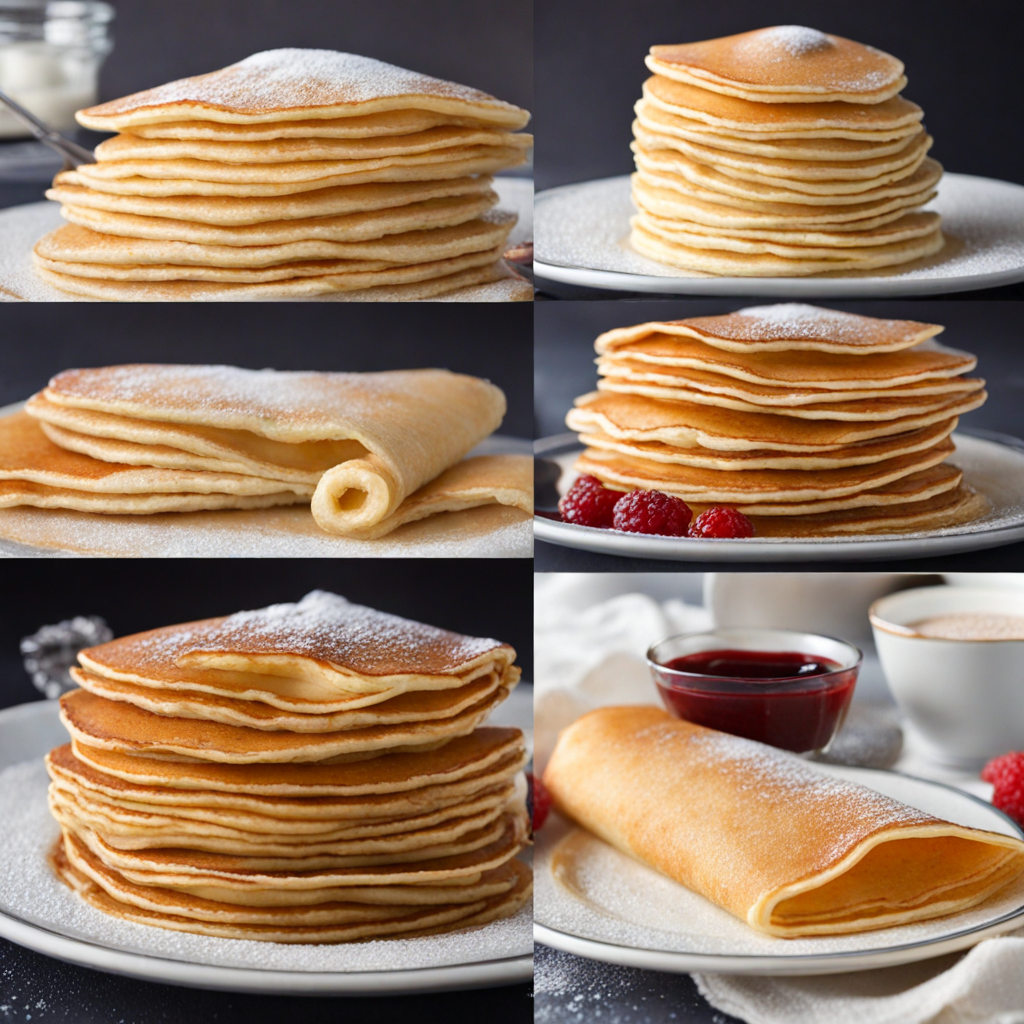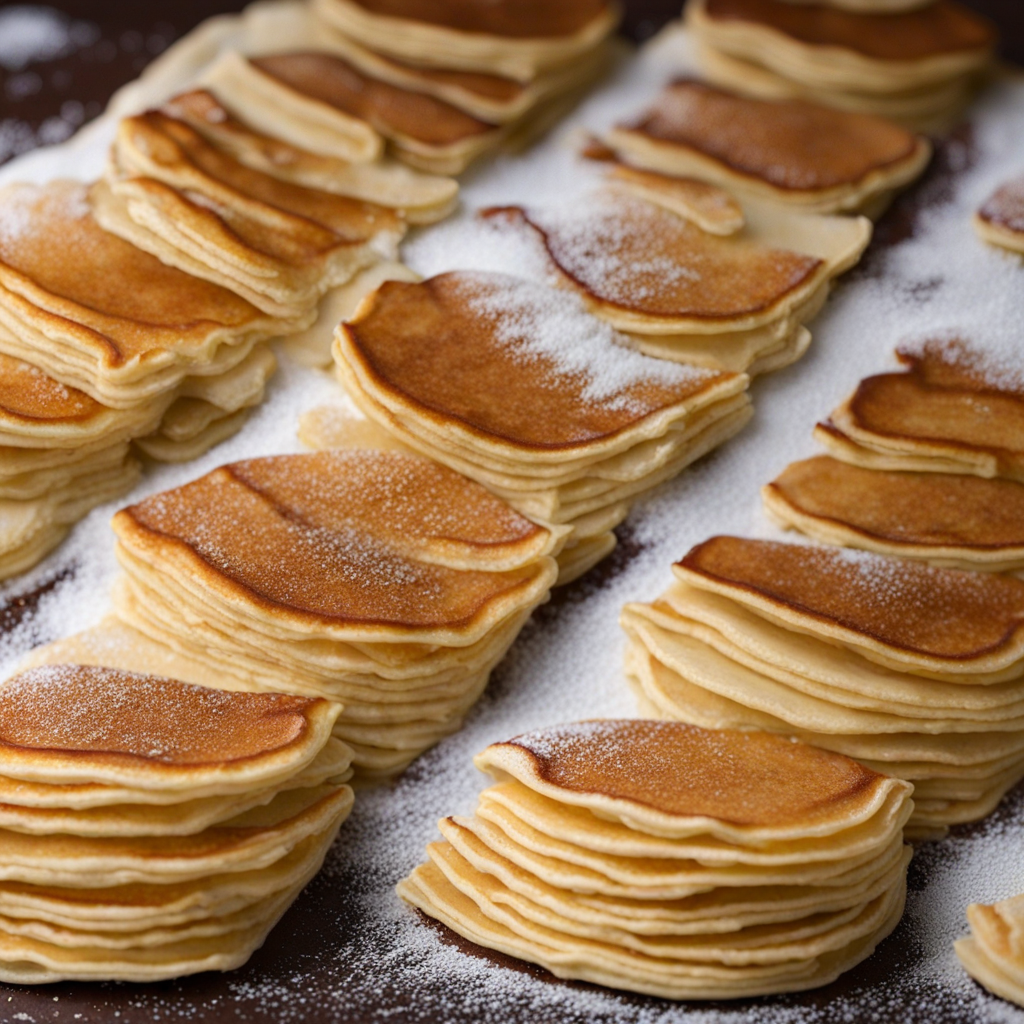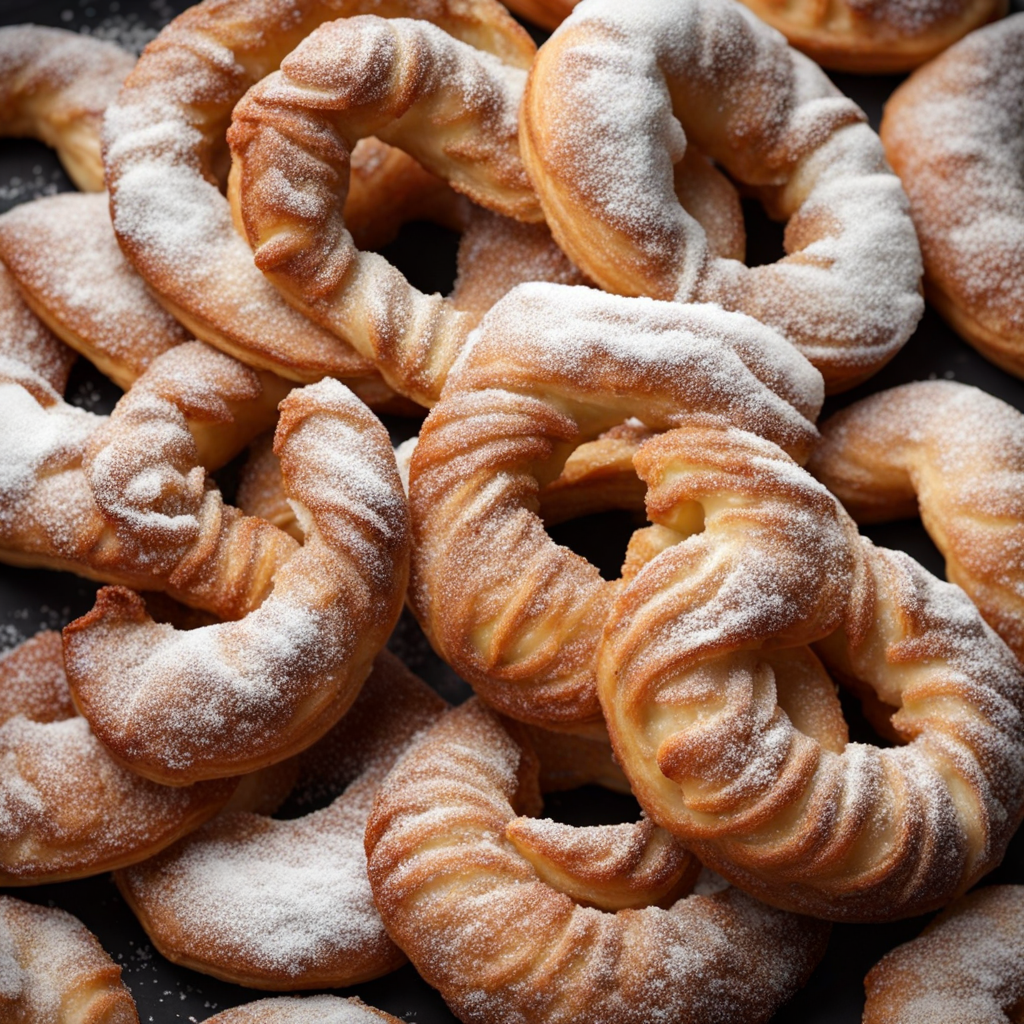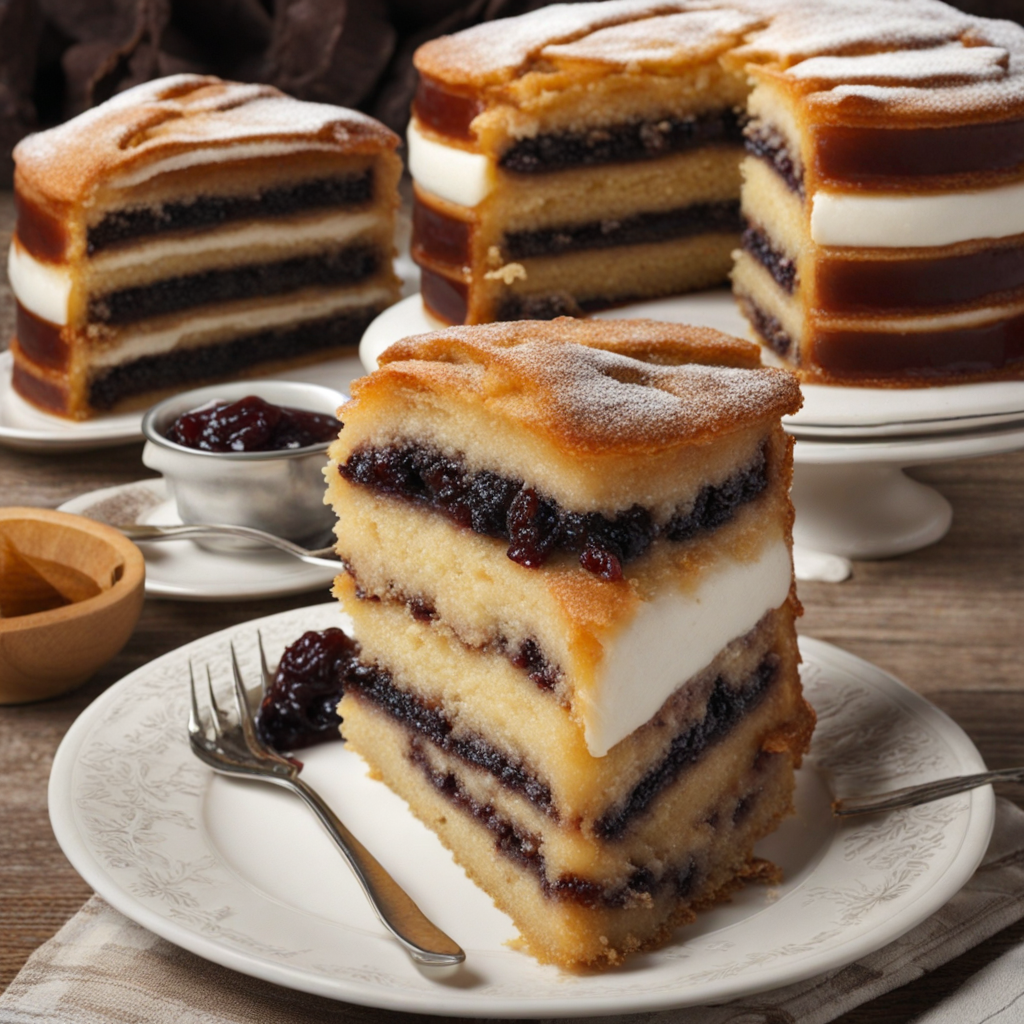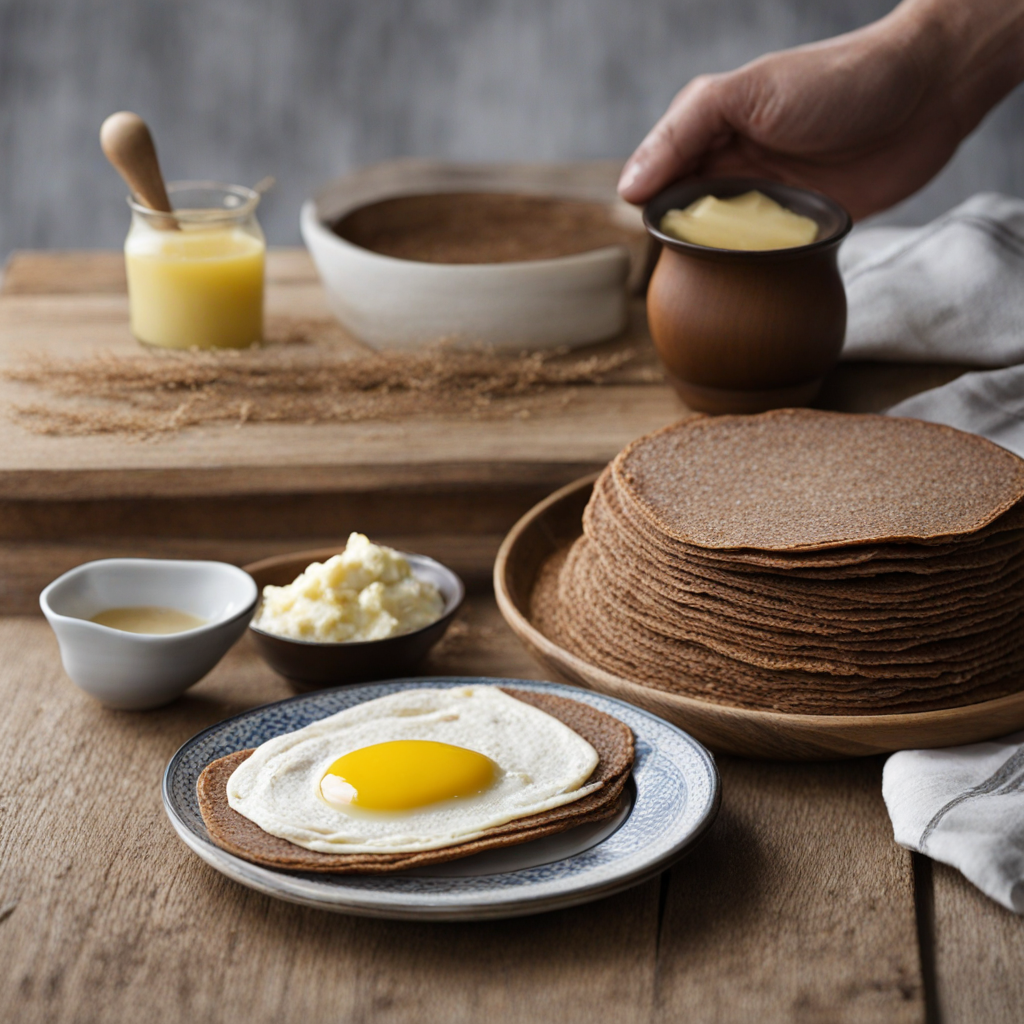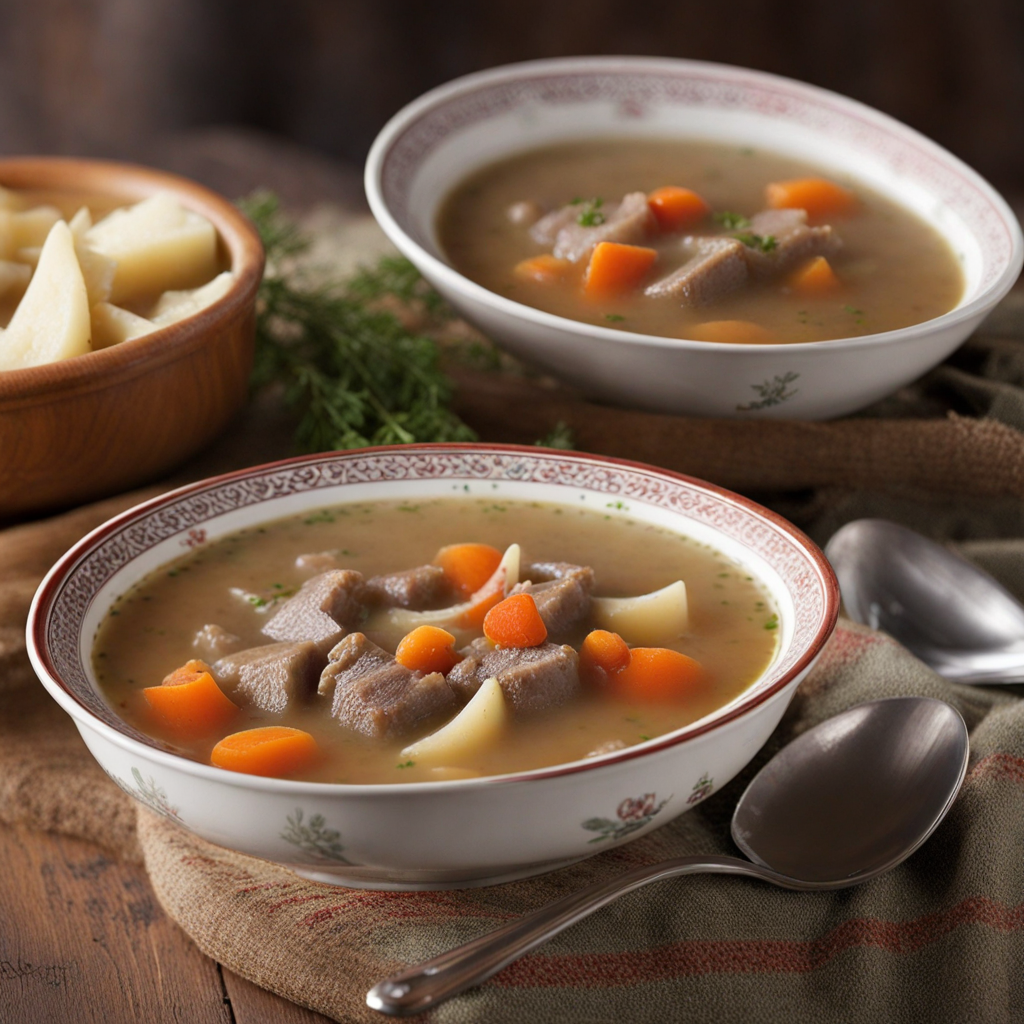Icelandic Pancakes
Icelandic pancakes, known as "pönnukökur," are a delightful culinary treat that reflect the simplicity and richness of Icelandic cuisine. These pancakes are distinctively thin, resembling crêpes, and are typically made from a batter of flour, eggs, milk, and a hint of sugar. The texture is soft and tender, making them perfect for folding or rolling. They are often cooked on a flat skillet until they develop a light golden hue, which gives them a subtle toasted flavor that enhances their overall appeal. Traditionally, Icelandic pancakes are served with a variety of delicious fillings and toppings, allowing for a customizable experience. Common accompaniments include a generous spread of homemade jam, particularly berry jams like bilberry or crowberry, which offer a sweet and tangy contrast to the mild flavor of the pancakes. Additionally, a dollop of whipped cream or a sprinkle of sugar adds a touch of indulgence. Some even enjoy them with a drizzle of syrup or a smear of butter, making each bite a delightful combination of flavors and textures. These pancakes are not just a breakfast item; they are enjoyed throughout the day and often served at gatherings and special occasions. The process of making pönnukökur can be a communal activity, bringing families and friends together to enjoy this simple yet satisfying dish. Whether served as a sweet treat with fruity fillings or as a savory dish with ingredients like cheese and smoked salmon, Icelandic pancakes offer a unique and delicious taste of Iceland that is sure to please anyone looking to explore new flavors.
How It Became This Dish
Origins of Pönnukökur Pönnukökur, the beloved Icelandic pancake, has deep roots in the culinary traditions of the country. The term 'pönnukökur' translates directly to "pancakes" in English, but these are not just any pancakes; they are a unique adaptation of the crepe style, thin and delicate, reflecting the simplicity and resourcefulness of Icelandic cuisine. Historical evidence suggests that pancakes have been a part of Icelandic culture since the 16th century, influenced by the Danish and other European cooking styles during a time of cultural exchange. The primary ingredients of pönnukökur—flour, milk, eggs, and a touch of sugar—are emblematic of the basic staples found in Iceland, a land marked by harsh weather conditions where agriculture was limited. The use of these simple ingredients showcases the ingenuity of Icelandic cooks who were able to create delightful dishes with what was available. This adaptability not only reflects the Icelandic spirit but also contributes to the enduring popularity of pönnukökur as a staple comfort food. Cultural Significance Pönnukökur holds a special place in Icelandic culture, often associated with family gatherings and community celebrations. Traditionally, these pancakes are served during special occasions, such as birthdays or family reunions, where they are prepared in large batches. The act of making pönnukökur is often a communal activity, gathering friends and family in the kitchen, which further enhances their significance as a symbol of togetherness. Moreover, pönnukökur is a versatile dish that can be enjoyed in various ways, making it beloved across generations. While they can be eaten plain, they are often filled with sweet fillings such as jam, whipped cream, or chocolate spread, catering to both adult and child palates. This adaptability allows pönnukökur to transcend its status as just a dessert, serving as a breakfast item or even a snack throughout the day. Development Over Time As Iceland's culinary landscape evolved, so too did the preparation and presentation of pönnukökur. In the early years, the pancakes were made over an open flame, a method that required skill and patience. This technique has largely been replaced by modern stovetops and non-stick pans, which allow for greater ease and consistency in cooking. However, the essence of the dish remains unchanged, with many families holding on to traditional recipes passed down through generations. In contemporary Iceland, pönnukökur has also found its way into cafes and restaurants, often appearing on menus alongside other traditional dishes, showcasing the fusion of old and new culinary trends. The modern take on pönnukökur includes experimental fillings and toppings, reflecting a broader global influence on Icelandic cuisine. Chefs are now creatively incorporating local ingredients, such as berries and herbs, to elevate the dish and introduce new flavors while still paying homage to its roots. Regional Variations While pönnukökur is widely recognized throughout Iceland, regional variations exist that showcase local tastes and traditions. In some areas, particularly in the Westfjords, pönnukökur may be slightly thicker and served with savory fillings, such as cheese or smoked fish, highlighting the region’s access to fresh seafood. In contrast, urban centers like Reykjavík tend to embrace the sweeter variations, often garnished with whipped cream and berries, catering to the modern palate. These regional differences are a testament to the diverse culinary heritage of Iceland, allowing pönnukökur to be a canvas for individual creativity while still maintaining its core identity. The evolving nature of this dish reflects the dynamic nature of Icelandic culture itself, which continues to adapt and change while honoring its past. Pönnukökur in Icelandic Festivals Pönnukökur also plays a role in Icelandic festivals and events, often featured in local markets and fairs. During Þorrablót, a midwinter festival celebrating traditional Icelandic culture, pönnukökur may be served alongside other traditional foods, symbolizing the richness of the country’s culinary history. This festival provides an opportunity for Icelanders to connect with their ancestry and celebrate the resilience of their culture, even in the face of modern challenges. Additionally, during national holidays, such as Iceland's National Day on June 17th, pönnukökur are often made in large quantities, celebrating not just the day itself but also the culinary heritage that binds Icelanders together. These gatherings foster a sense of national pride and community, where food serves as both a unifying force and a reminder of shared history. Global Influence and Popularity In recent years, pönnukökur has garnered international attention, with Iceland's growing culinary tourism bringing the dish to the forefront. Food enthusiasts visiting Iceland are often eager to try traditional dishes, and pönnukökur stands out as a must-try item. Its simple yet delightful flavor profile appeals to a wide audience, allowing it to cross cultural boundaries and gain fans far beyond Iceland's shores. Social media platforms have also played a significant role in the global spread of pönnukökur, with many food bloggers and influencers showcasing their experiences of enjoying this traditional dish. This visibility not only promotes Icelandic cuisine but also fosters a deeper appreciation for the cultural stories behind the food. As pönnukökur continues to capture the hearts of food lovers around the world, it reinforces Iceland's identity as a nation rich in culinary heritage. Conclusion The history of pönnukökur is a compelling narrative of tradition, community, and cultural evolution. From its origins as a simple pancake to its status as a cherished comfort food, pönnukökur encapsulates the essence of Icelandic culinary culture. As it adapts to modern tastes while remaining deeply rooted in tradition, pönnukökur serves as a delicious reminder of Iceland's rich history and the enduring power of food to connect people across generations and cultures.
You may like
Discover local flavors from Iceland


